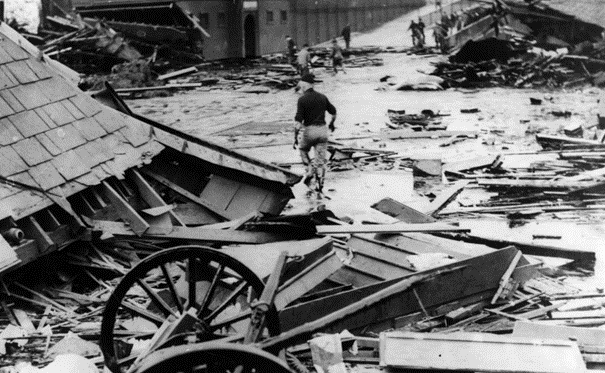The Weekly Reflektion 09/2021
The standards we use do originate somewhere. Do not dismiss them without knowing where they come from and what they were intended to do.

Could an accident with 21 fatalities caused by a lack of competence and failure to recognize signals happen in your operation?
On January 15th, 1919, a tank 15m tall, 27m in diameter and containing 8700m3 of molasses failed. An 8m high ‘molasses’ wave swept buildings off their foundations in the North End of Boston, Massachusetts, killing 21 people, and injuring 150. Molasses is the product of boiling sugar cane juice and is used in the process of producing alcohol for both alcoholic drinks and explosives. The tank had been hastily constructed in 1915 as a response to the demand for industrial alcohol for explosives for the First World War.
Two days prior to the tank failure, a boat had unloaded molasses which was being readied for transport to the company plant at Cambridge, Mass. The molasses were warmed to be able to be pumped from the boat as ambient temperatures were as low as -15o C during that period. The tank was filled to the top, something that had only been done 3 times previously during its lifetime. At 1230 hrs, the tank failed and the wave of molasses travelling at 35 mph swept through the surrounding streets. As the molasses spread out, it cooled quickly and became very viscous, making rescue operations extra difficult. The last victims were recovered 4 days later. The clean-up took many weeks, and the North End of Boston was reputed to smell of molasses for decades after the incident.
Signals that the tank was failing had been noticed and the company’s response was to paint the tank brown so that leaks could not be seen. Children collected the leaked molasses in cups as a treat. These signals were not heeded.
The owners of the tank claimed that the failure had been caused by explosives set by anarchists, but the verdict of the inquiry put the blame on the owners. The tanks wall thickness was too thin, testing had been insufficient, and the metal contained too little manganese making it brittle at low temperatures. The person responsible for overseeing the construction of the tank had no engineering experience, and this led to significant changes in laws and regulations, including requirements for oversight of construction projects by a licensed architect and a civil engineer.
The victims’ families brought a class-action suit against the owners, becoming a milestone for modern corporate regulation in the US. The owners paid out the equivalent of US$9 million, ca. US$100,000 per victim.
We have discussed the importance of signals in previous Reflektions. Which signals are you looking for, and, more importantly, which signals are you reacting to? It may be a temptation to deviate from standards to challenge established truth and save some money. Check first where the requirements originated, and why. This of course requires you to have people with the necessary competence to understand the standards and how they should be applied.
